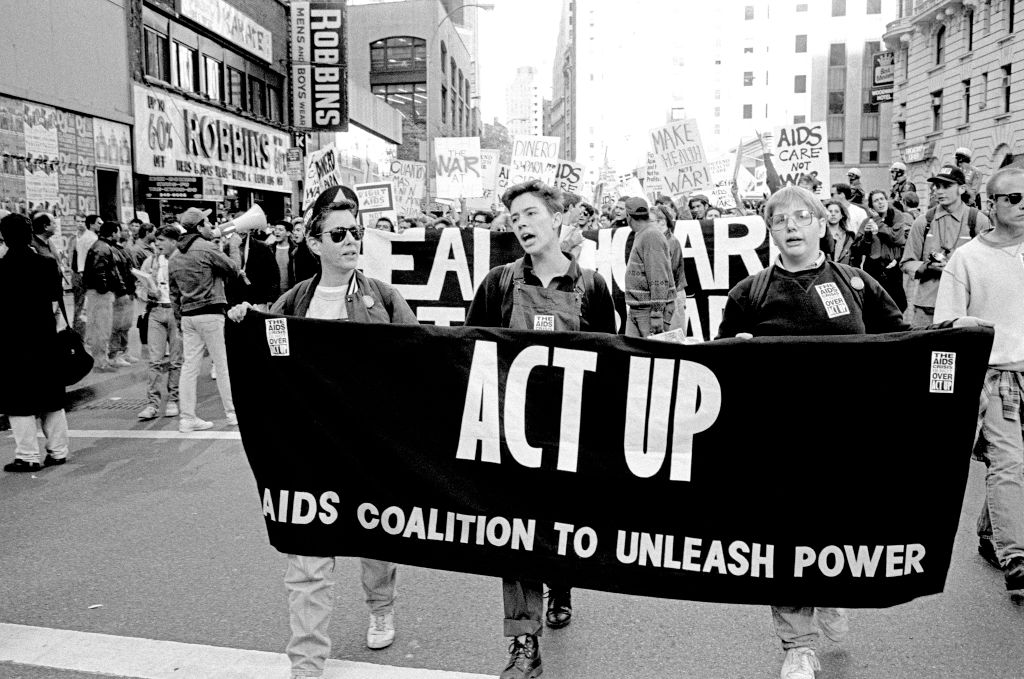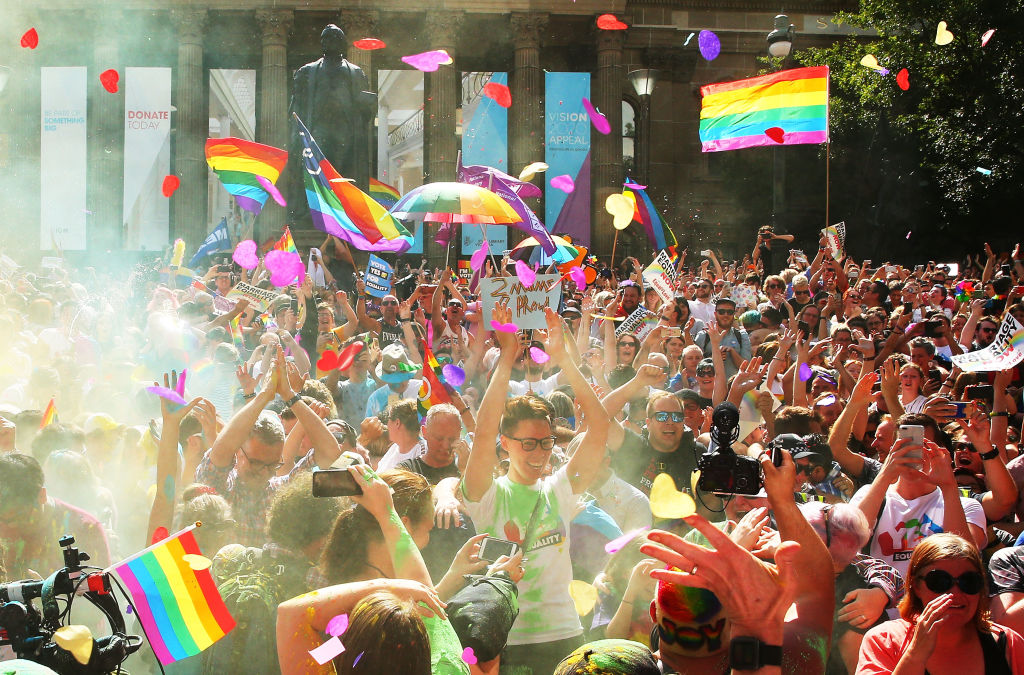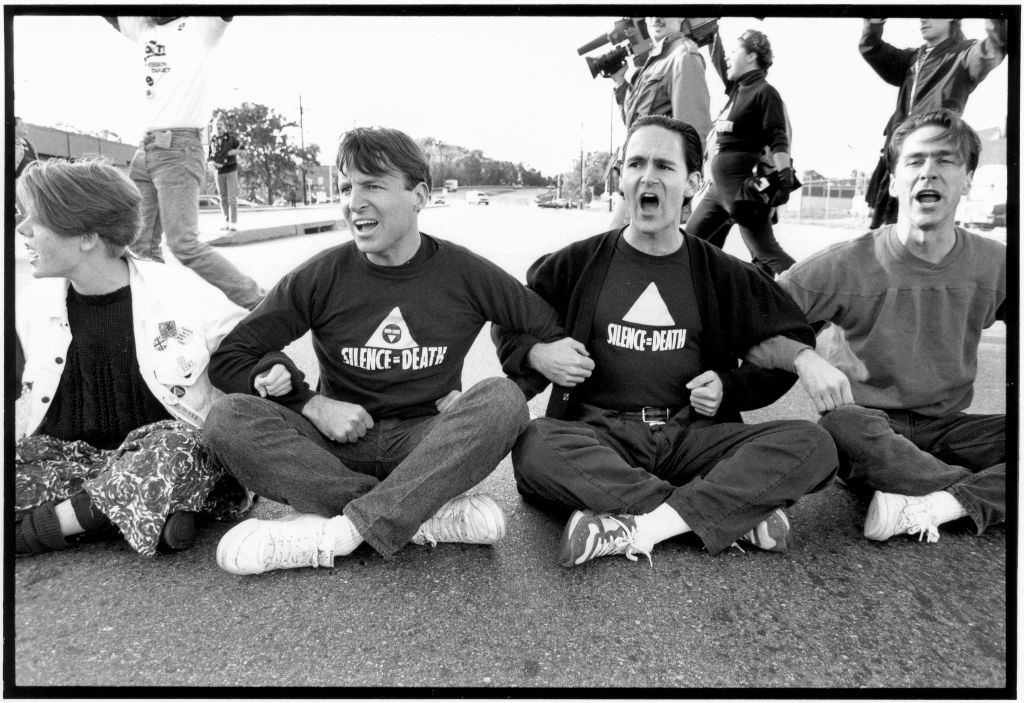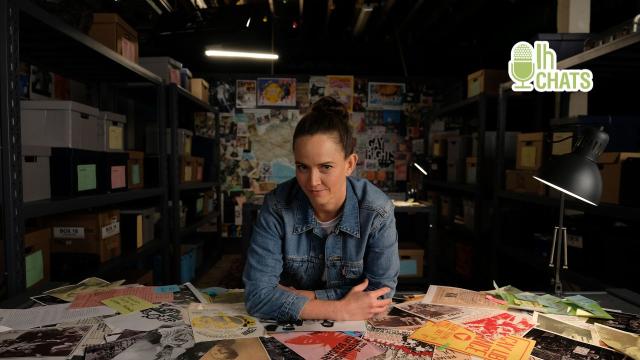Ever wanted to know more about queer history in Australia? Well, award-winning comedian and ‘professional lesbian’ Zoë Coombs Marr is uncovering exactly that in ABC’s new three-part docuseries, Queerstralia.
The series, led by Coombs Marr, will investigate the untold and wild queer history of Australia that’s often left to heterosexual people to incorrectly tell.
Queerstralia will introduce you to gay diggers, lesbian convict gangs and trans pioneers; cross-dressing bushrangers, iconic drag acts and the modern-day heroes who fought tirelessly for change.
Unlike many other queer history documentaries, Queerstralia also explores how colonisation has affected First Nations queerness and connection to sexuality with Nayuka Gorrie guiding the series from an Indigenous perspective.
Lifehacker Australia had the immense privilege to chat with Aussie comedian and Queerstralia’s host and narrator, Zoë Coombs Marr, about the documentary and its importance for queer Australians.
The importance of telling queer histories
Queer history in general is hardly spoken about on a mainstream level, let alone in an Australian context.
For Coombs Marr, telling and uncovering queer history is incredibly important on a basic level because “it’s evidence that we’ve always existed.”
“The thing that gets thrown at queer and trans people, and it’s the same narrative that gets repeated again and again, is the idea that we’re somehow unnatural or sick or evil or bad, and that who we are is something that we’re doing wrong,” Coombs Marr explained.
“That [narrative] is debunked, really, when you look at history and you see all of these people across every time period who were queer and were trans and there may have been … different ways that they expressed that, but we have always been here.”
As a result, being able to look at our history allows us queer people the ability to see our experience in a way that we aren’t usually afforded. As Coombs Marr put it, it “gives legitimacy to our identities.”
Speaking personally, I never grew up knowing anything about queer history, especially in Australia. The only bits I knew were rooted in homophobia or transphobia and even then those stories came from a heterosexual context. As such, it made me feel lost, in a way, because I didn’t feel attached or grounded in any real history.
Documentaries like Queerstralia allow queer people like me to feel rooted in something, connected to a larger part of society and to people who have been essential pillars in the community.
It’s also important to see how queer people have been oppressed throughout history because even that contextualises where we are today. In some parts, it angers me to see how little things have changed, but in other ways, it inspires me because no matter how much opposition queer people face, we always find ways to survive and flourish.
Queer history isn’t linear

Working on Queerstralia, Coombs Marr said that she noticed a cyclical pattern of tolerance and intolerance towards queer people across different time periods. Right now, she believes that we’re in a backlash moment.
“With visibility comes exposure and from that comes this kind of intolerance that pops up, so it’s not just a straight line,” Coombs Marr said, adding that “Nothing in my documentary is straight. Actually, there’s one straight person, there’s an easter egg; see if you can find it.”
“[But] we can see that tolerance, for instance, is an ongoing fight. We never finished, it’s always about this kind of constant vigilance and making sure that we don’t lose the rights that we’ve gained and that we’re also not leaving anyone behind.”
“[The] progress that has been made for gay people, trans people still have a way to go with that as well and they’re in a really vulnerable position right now. The same sorts of struggles that are happening for trans people is (sic) what gay people were fighting against in the ’70s.”
This notion that acceptance is cyclical checks out. The AIDS crisis, for instance, came after LGBTQIA+ people made many public strides to gain some level of basic human rights during the sexual liberation of the ’70s. During the ’80s and ’90s, however, when HIV and AIDS infections were spreading rapidly, the queer community experienced intense homophobia. A stigma that queer people still fight against today.
It’s for that reason that Coombs Marr believes that it’s important to look at history to see these patterns form but also to see “how progress can be made and … the incredible work that people have done to get us where we are today.”
The power of humour in Queerstralia

The thing about Queerstralia that resonated deeply with me was how funny it was.
Most of the time, documentaries about queerness or the community are dark and incredibly sombre. Although queer history is riddled with devastating hatred and violence, we’re also incredibly fun, vibrant and light-hearted people, despite everything.
Queerstralia is the first docuseries I’ve seen that balances seriousness with humour in a way that feels authentically queer.
“I think queer people, like any oppressed group, have a lot of trauma in our history and our present, but the way that we have processed that often has been through humour,” Coombs Marr explained.
“That’s what’s so great about queer people and queer history … they’ve gone ‘Well, fuck you guys. I’m gonna do this anyway, this is me and I have to live my life so I’m gonna find a way to do it’, and that defiance often takes the form of humour and it’s also a way that we communicate with each other.”
If you’re in the community, you’ll know exactly what Coombs Marr is talking about. The way that I speak to my queer friends is very different to how I communicate with people who don’t identify as LGBTQIA+.
As Queerstralia explores, there was actually a secret language used by queer people to evade being ‘caught out’ in public or ‘outed’.
“One of the interviews that I do is with the Les Girls, or some of the original Les Girls’, and they were talking in Polari, which is a language which was used in Australia [but originates in the UK] but it’s like a secret rhyming slang that queer people used to use, and the way that they would use it was to evade the cops because it was illegal.”
“That’s the serious side of it, but it’s also really funny. It’s like a funny rhyming slang that queer people would use to talk about a straight person who is in front of them and make fun of their haircut like that. Like, that’s queer culture.”
For Coombs Marr, the Polari language is the perfect example of how queer history is both serious and humorous.
“That’s the way we’ve responded to this stuff, we’re these naughty deviants so there’s kind of a fun to being part of the criminal underworld. Yes, the laws are unjust and bad, and I’m glad that they’ve changed, [but] the way that people responded to them was with you know, light and humour and kind of sassiness as well.”
“I think that’s really important. It was important to me to tell the story in a clear way and the way that I know to do that is through humour.”
Obviously, as a comedian, it was important for Coombs Marr to weave humour into Queerstralia when it was needed.
“Obviously, we’re not making fun of like, the AIDS crisis. We’re not poking fun at people who were convicted on sodomy charges; we’re making fun of the straights and the outside world and the kind of ridiculous constructs that put us in these silly places where we’re illegal.”
“It’s also very personal, it’s my take on queer history. I’m no historian, I’m a comedian and … [I’m] trying to tell Australian queer history. But yeah, it’s just my take and my take is a humorous one.”
Getting queer people to tell their own stories

So often queer people see our stories, our truths and our lives being discussed and dissected by those who aren’t in the community. Whether it’s well-intentioned or not (more often not), it doesn’t help anything. In fact, there’s a real power in allowing people to speak their own stories.
Queerstralia recognises that power and gives the space to allow for truth-telling to take place.
For Coombs Marr, this was particularly important when it came to telling First Nations queer stories.
“Obviously, I’m not Indigenous, so that’s not my story to tell in that way so it was important for me to be really true to that process all the way through and to create a platform for people to tell their own stories,” she explained.
“That is easy to kind of say [but] in practice, it’s a long process [and] not just getting a consultant on in the last couple of months. We’ve had researchers, First Nations researchers, embedded in the process from the very beginning. Todd Fernando, who’s interviewed in the show, came on as a researcher from the beginning. Nayuka Gorrie was involved in the research process from the beginning, which was in the first research phase was in 2020.”
Having people who are in the LGBTQIA+ community working behind the scenes was also vital for Coombs Marr in making Queerstralia.
“It was really important to me that we had [a] majority queer team. There are a couple of straights in there, but we’ll allow it.”
“It’s not just me … we’ve had this amazing team of people [where] it means something to all of us.” Coombs Marr explained.
A heartwarming, and rarely seen, aspect of Queerstralia was having a lot of older queer people tell their stories on what it was like living through a time when it was illegal to be themselves.
It’s incredibly powerful seeing elder queer people because we lost so many of them during the AIDS crisis, which essentially wiped out a generation of queer people. As such, we don’t get many opportunities to learn from them and to be told that our existence matters.
As Coombs Marr explained, “It’s interesting because we don’t grow up in queer families, Hannah [Gadsby] even says this, it’s like the generations don’t talk to each other. We are sort of cut off from each other. So we have to make an effort to make those connections.”
“They’re the ones that were there, they are firsthand sources [so] it’s great to get the stories and their perspectives. They’re also really funny, they’re very naughty, they really are rule breakers.”
“We owe them so much. You know? Like the world that we live in is the world that they had a big part in making. I feel so lucky to get to speak to all these amazing people.”
What can young queer people get out of Queerstralia?
The biggest thing that Zoë Coombs Marr hopes young queer people get out of Queerstralia is that they learn something and feel connected to a larger story.
“I hope that they learn things. I hope that they get a different picture of what Australia is and has been. [I hope] they feel things and see how much stuff has changed and also how much it hasn’t, as well,” she explained.
“I hope queer people see it and see themselves in it.”
Oh, and of course, she hopes that they’re entertained along the way.
Queerstralia is an incredibly important docuseries that I highly recommend everyone take the time to enjoy. We’re very privileged to have a piece of work like this that unpacks queer history through queer people.
Queerstralia premiers Tuesday, 28 February at 8:30 pm on ABC TV and ABC iview.

Leave a Reply
You must be logged in to post a comment.